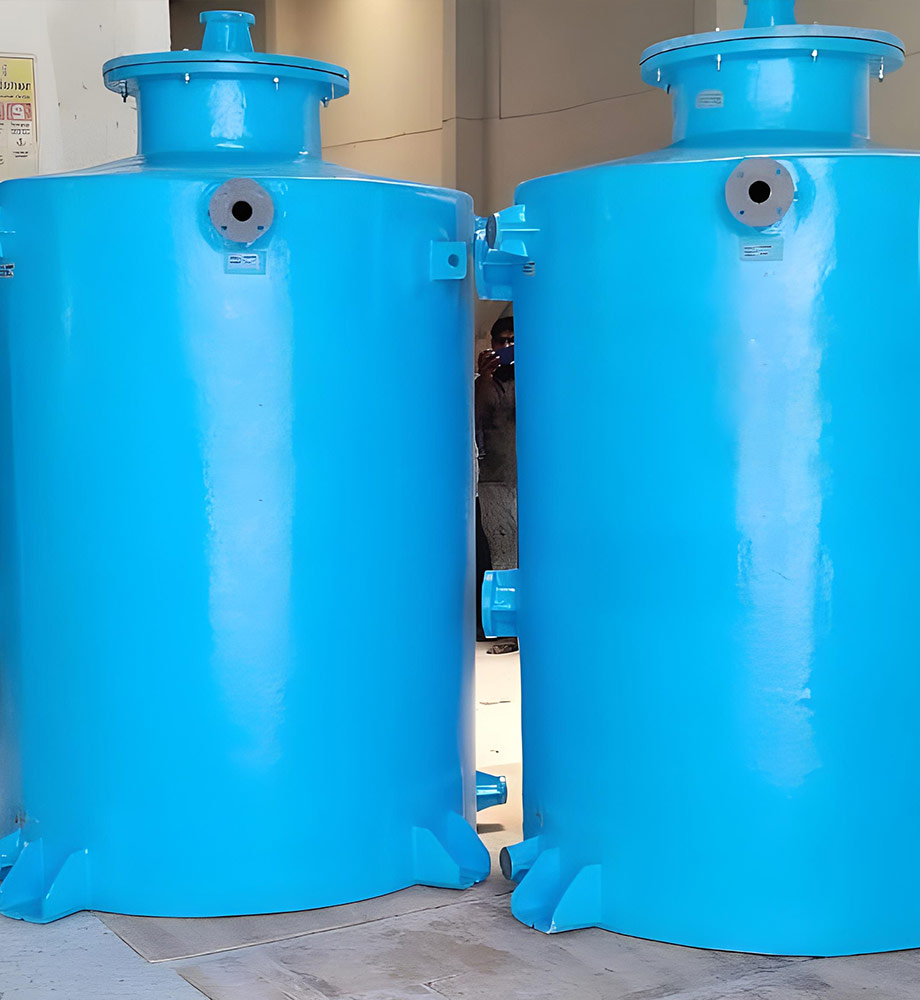Key Features
- Thick Thermoplastic Liner: Inner liner typically ~50 mm (2″) thick to resist chemical attack
- Butt-Welded Seams: High-strength welded joints in liner to prevent leaks
- Multiple Liner Materials: Homopolymer PP, copolymer PP-H, PE, PVC, CPVC, PVDF, PTFE available
- Standard Tank Configurations: Vertical or horizontal, flat/dished ends, insulated options
Benefits
- Maximal Corrosion Protection: Thermoplastic liner acts as the primary barrier, allowing storage of highly aggressive chemicals (strong acids, bases, solvents)
- High-Temp & Wear Resistance: Liners and FRP withstand elevated temperatures and abrasion
- Zero Leakage: Fully sealed interior ensures no permeation
Applications
- Chemical Manufacturing: Storage of hydrofluoric, nitric, sulfuric acids, and other aggressive reagents
- Petrochemical & Refining: Containment of corrosive petrochemicals and petrochemical intermediates
- Waste Treatment: Aggressive effluent processing (solvent recovery, acid regeneration)
Technical Specifications
- Liner Materials: PP (homopolymer, copolymer), HDPE, PVC, CPVC, PVDF, PTFE
- Liner Thickness: Approximately 50 mm (2″) standard, can vary based on specification
- Outer Shell: FRP with vinyl ester resin-rich laminate
- Design Temperature: Up to 80–100 °C, depending on liner material
Unique Selling Points (USPs)
- Dual-Laminate Expertise: Precision fabrication ensures perfect bonding of liner and FRP for maximum integrity
- ASME Certified: Tanks can be manufactured as per ASME RTP-1 standards for thermoplastic-lined equipment

